Several feet away, with camera in hand, I stand on a massive patch of asphalt and watch the test driver WOT (wide-open throttle) the HEMI-equipped Ram. As his left foot still lightly rests on the brake, the rear tires start spinning furiously, roaring their way around a white cloud of tire smoke billowing from the roasting rear rubber. I capture the moment and snap images, realizing the burnout also perfectly encapsulates why the HEMI is back.
Objectively speaking, the HEMI V-8 outputs less, and does so less efficiently, than either version of the turbocharged, 3.0L straight-six Hurricane engines that replaced it in 2025. Yet, customers missed eight cylinders attached to a cross-plane crankshaft dearly. And they let Ram know about it. One model year later — here we are.
Given all that, I happily hopped, skipped, and jumped to Chelsea Proving Grounds in Southeast Michigan, to rumble around in the new, yet quite old, HEMI-powered Ram trucks. I want to discern how well the old engine fits in the new truck. Spoiler alert: Like a glove.
In short: Just a couple of months after the “Mea culpa” press release, Ram already started shipping HEMI V-8–equipped, 2026 model year trucks to dealers around the country. Standard equipment on none of the trims, but optionally available on all but two of them, Ram expects a lot of folks to choose 395 horsepower and 410 pound-feet of torque over the standard engines. Even with the compressed schedule, the HEMI integrated seamlessly into the updated for 2025 truck, operates smoothly, and rumbles just like you remember.
-
V-8 rumble, enhanced with GT exhaust -
Linear power delivery -
Smooth and quick shifts from the 8-speed -
Quiet operation when cruising
-
Costs $1,200 more than 3.0L S.O. Hurricane engine -
Less power and torque than S.O. Hurricane engine -
$2,895 more than Pentastar V-6 engine
Updated Ram 1500: What It Took to Bolt in the HEMI
While Ram essentially took the same 5.7L HEMI V-8 from the 2024 1500 and bolted it right back in, same power outputs and all. The reality of making it work with the updated-for-2025 Ram proved a challenge.
I spoke with Dan Stagner, Vehicle Synthesis Manager for Ram. He explained it like this: “The engine actually bolted right back in. But the electrical architecture of the 2025 was upgraded such that we had better bandwidth for the CAN (CAN Bus) network, faster speeds, and more security. So, all of the modules on the vehicle that interact with the engine had to be recalibrated, reconfigured, new messages. All these things had to be reintegrated and matched to the HEMI engine.”
In other words, when the V-8 left the Ram in 2024, all the computers spoke one language. When it returned, they spoke a different language, and engineers had to teach the HEMI the new language.
“But you don’t have to worry about crash test and those things much, correct?” I asked. Stagner replied, “We did do some verification crash testing. This was a true, full development program. We did actually go through all of the steps you bring a vehicle back to production with.” Stagner continued, “But the primary or biggest challenge was all of the electrical integration.”
It’s more evidence of just how fast technology moves in vehicles. If you miss a step, you find yourself three steps behind somehow.
Same Old 5.7L V-8, Almost …
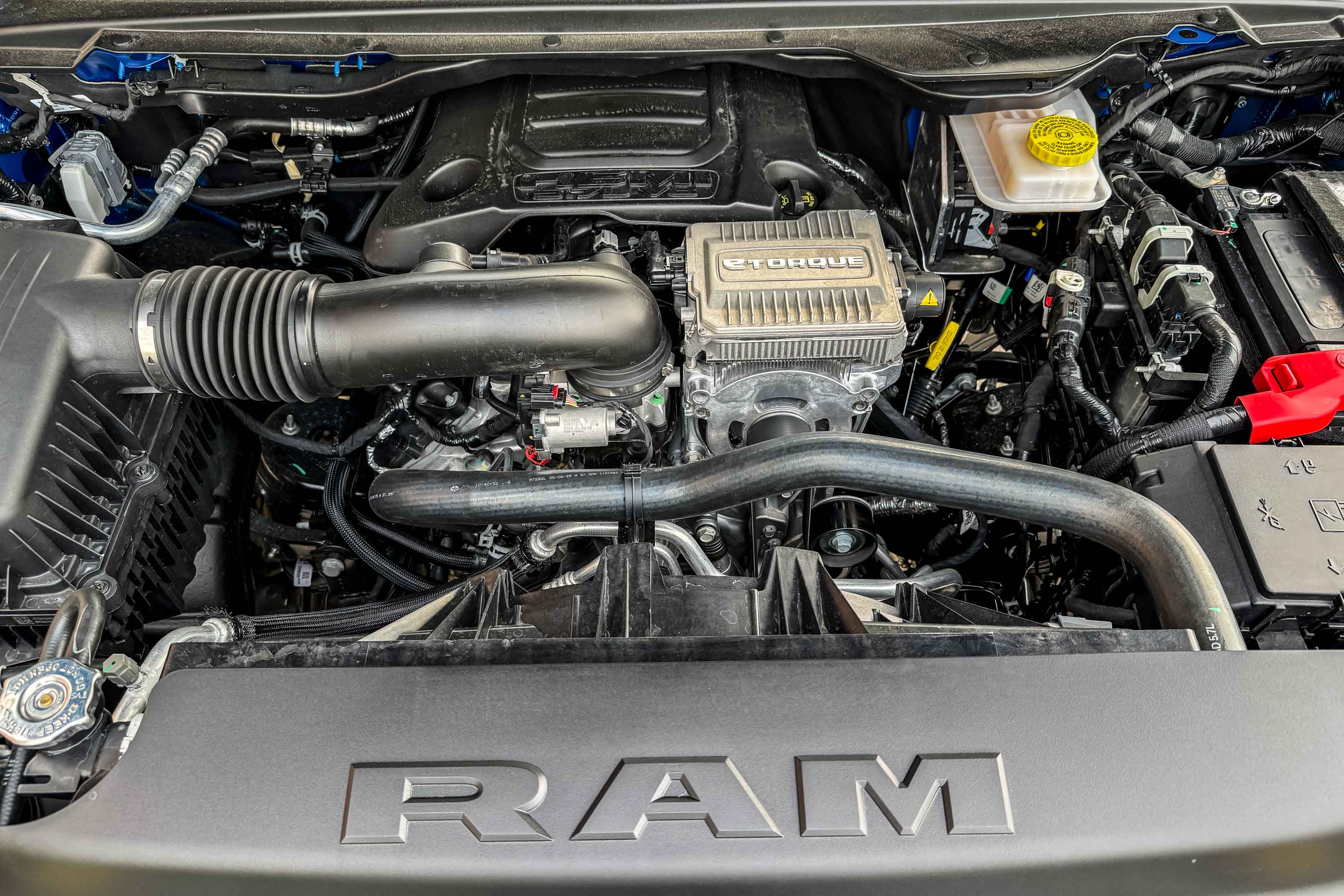
Ram bolted the same 5.7L to the 2026 model that left after 2024. It continues to make a peak 395 horsepower at 5,600 rpm and 410 pound-feet of torque at 3,950 rpm. It still uses an eight-speed automatic transmission and sends power to either the rear or all four wheels.
The HEMI makes use of variable valve timing and cylinder deactivation to aid in lowering fuel consumption. Also in that vein, the same eTorque mild hybrid system bolts up to it.
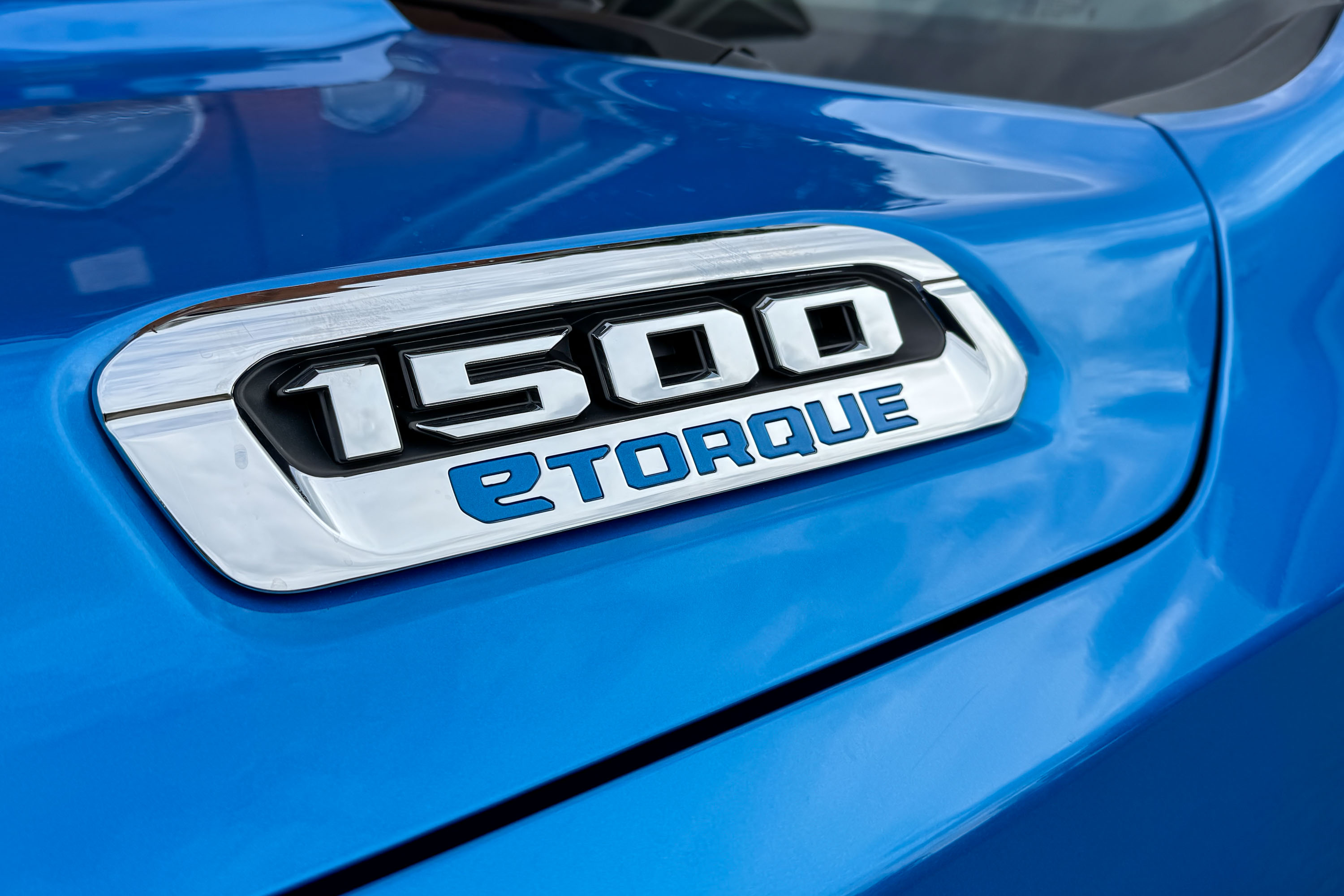
That 48V system combines a belt-driven motor generator unit and 430Wh battery pack (mounted behind the rear seat) to provide an additional 16 horsepower (12 kW) and 130 pound-feet of torque at initial throttle tip-in. Basically, it adds a little extra oomph at low engine speeds.
However, buyers get a couple of upgrades for 2026. First, the V-8 now comes standard with the louder, throatier GT exhaust system. It used to come as a $1,700 Mopar option. This system combines a 3-inch single tube to the muffler, and then splits to dual exhaust tips at the bumper. It looks nice and sounds fantastic.

You also get a “Symbol of Protest” badge on the front fender. It’s a Ram’s head with a HEMI V-8 block body.
Finally, selecting the Hemi also includes the larger, 33-gallon gasoline tank, which is a $445 option otherwise. It won’t save you money at the pump, but you will visit less often. Speaking of, Ram specifications state the V-8–equipped 1500s achieve 17 mpg in the city, 23 on the highway, and 19 combined. But I’m sure actual numbers depend on truck trim, configuration, and how heavy your right foot is.
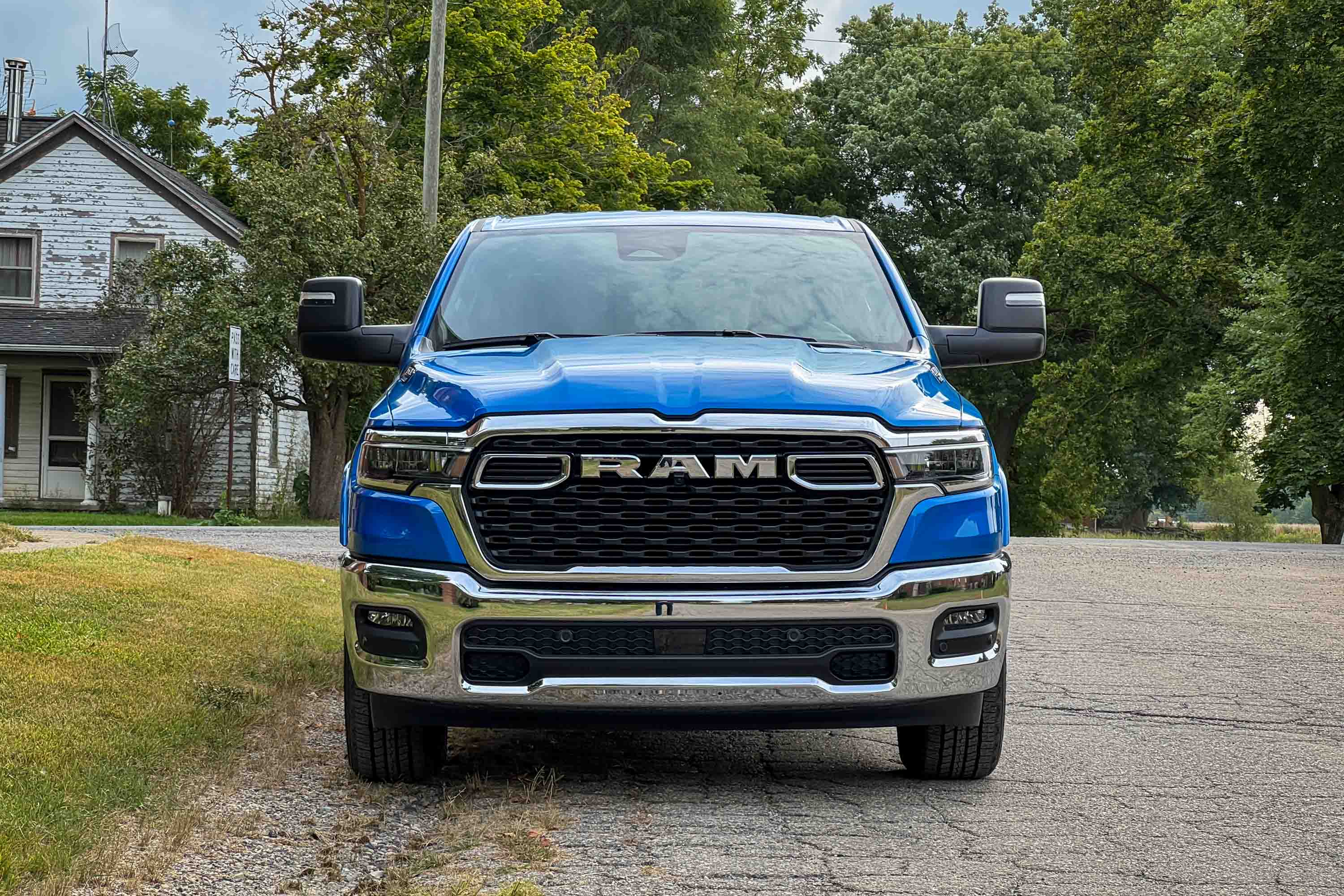
2026 Ram 1500 Powertrain Breakdown
Here’s the thing: Ram still offers the same three six-cylinder engines from 2025, including the two turbocharged, 3.0L inline-six Hurricane engines: standard output (S.O.) and high output (H.O.). And the base Tradesman, as well as the Express, Warlock, and Big Horn/Lone Star trims still come standard with the Pentastar V-6.
While that engine’s 305 horsepower and 271 pound-feet of torque are adequate. I much prefer the optional S.O. Hurricane and its ample 420 horsepower and 469 pound-feet of torque. It’s a $1,695 additional cost. Well worth it. The inline-six operates smoothly and hustles the 1500 along swiftly. That engine comes standard on the Rebel and Laramie trims.
On all of those aforementioned trims, Ram offers the V-8. But not for free. To upgrade from the V-6 trucks, you need to spend the $1,695 to get to the Hurricane S.O. and then another $1,200 ($2,895 in total) for the V-8. If the trims come with the S.O., you still pay $1,200. Ironic since the HEMI makes noticeably less power and torque than the S.O. Hurricane.
Ram will bolt up the HEMI to the Limited and Longhorn, which come standard with the H.O. Hurricane. If you want to trade 540 horsepower and 521 pound-feet of turbocharged I-6 muscle for the relatively meek V-8, it’s a no-cost option.
Only the new RHO and top-of-the-line Tungsten trims come standard and only with the H.O. Hurricane engine with no option to switch.
Frankly, it all seems a bit silly.
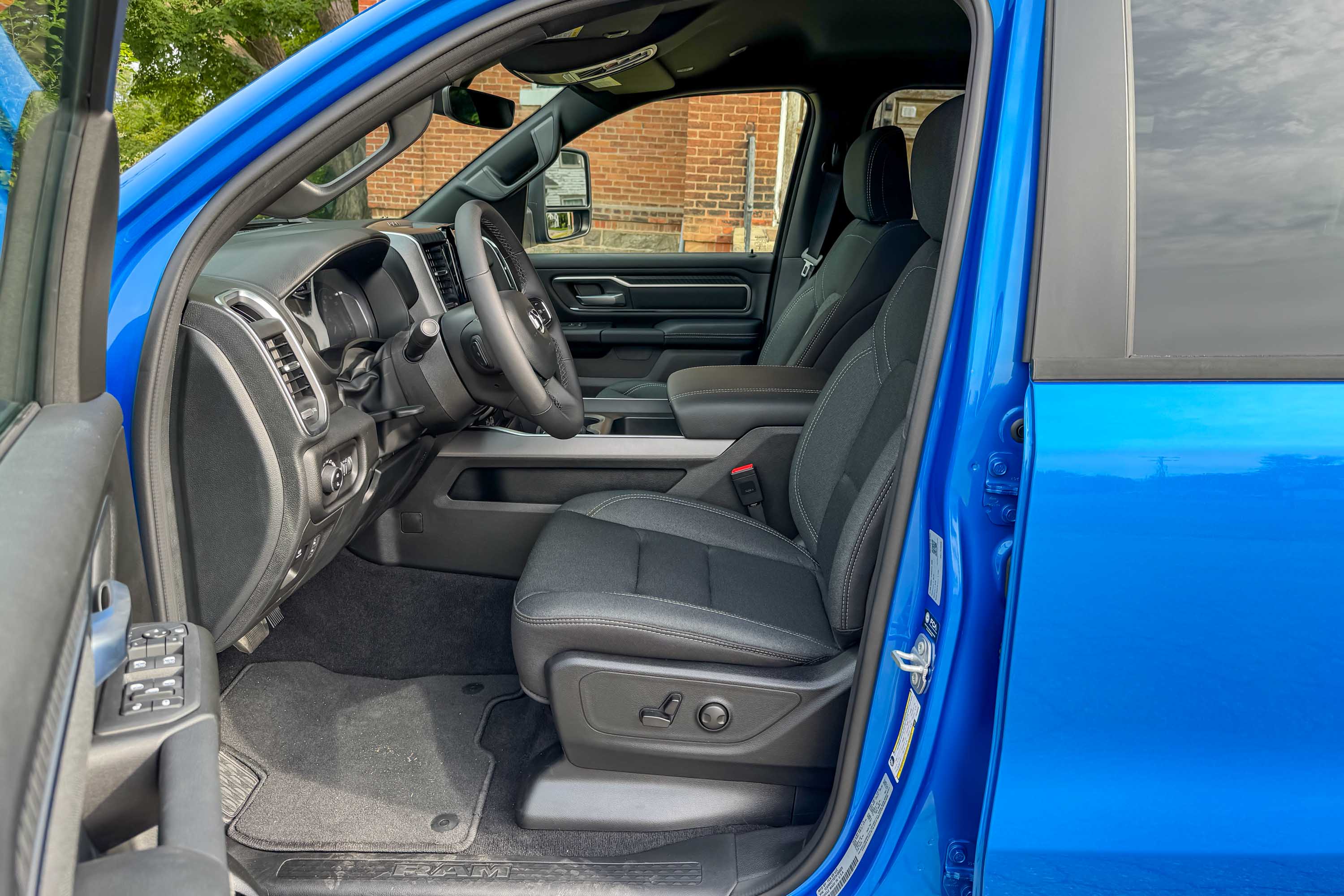
Motoring Along
But then you get behind the wheel and start the engine. In the span of 6 hours, I drove Big Horn, Laramie, Limited, and Warlock versions of the 1500. I hit the road, zipped through an autocross course, towed a trailer, and went off-road. All of them employed HEMI power under the hood. And, in every circumstance, the V-8 managed it with ease. The engine never felt stressed or strained.
Bury the accelerator and the HEMI roars, shoving you back in the seat and readily running to its 5,800 rpm redline. Gears bang off in a flash, and the Ram hustles like a ’60s muscle car.
Then you hit cruising speed and all the facts, figures, and practical reasoning to choose a different powerplant fall away as the soothing cross-plane rumble kicks in. Sitting up high, motoring along in a tree-lined two-lane with a V-8 purring just feels right. There’s the nostalgia, as well as the resistance to change, embedded in that feeling, no doubt. However, another advantage reveals itself.
Beyond the exhaust note, I also noticed more linearity in power build-up. Being a naturally aspirated engine, there’s no spinning up turbos to dilute or muddle the experience. You also get nice crisp shifts from the eight-speed and immediate power delivery afterward. It feels natural. It feels right.
Granted, once you reach interstate speeds, the pull falls off precipitously. The Hurricane really starts to show its objective power output superiority at higher speeds. As memory serves, that engine pulled you right to triple digits in a hurry. And that’s the S.O. Hurricane. Inline-six engines also operate inherently smoothly. And both Hurricane engines use the same drivetrain as the HEMI.
But dang it if that throaty rumble doesn’t just perfectly match the attitude of the Ram 1500. It’s the experience I prefer.
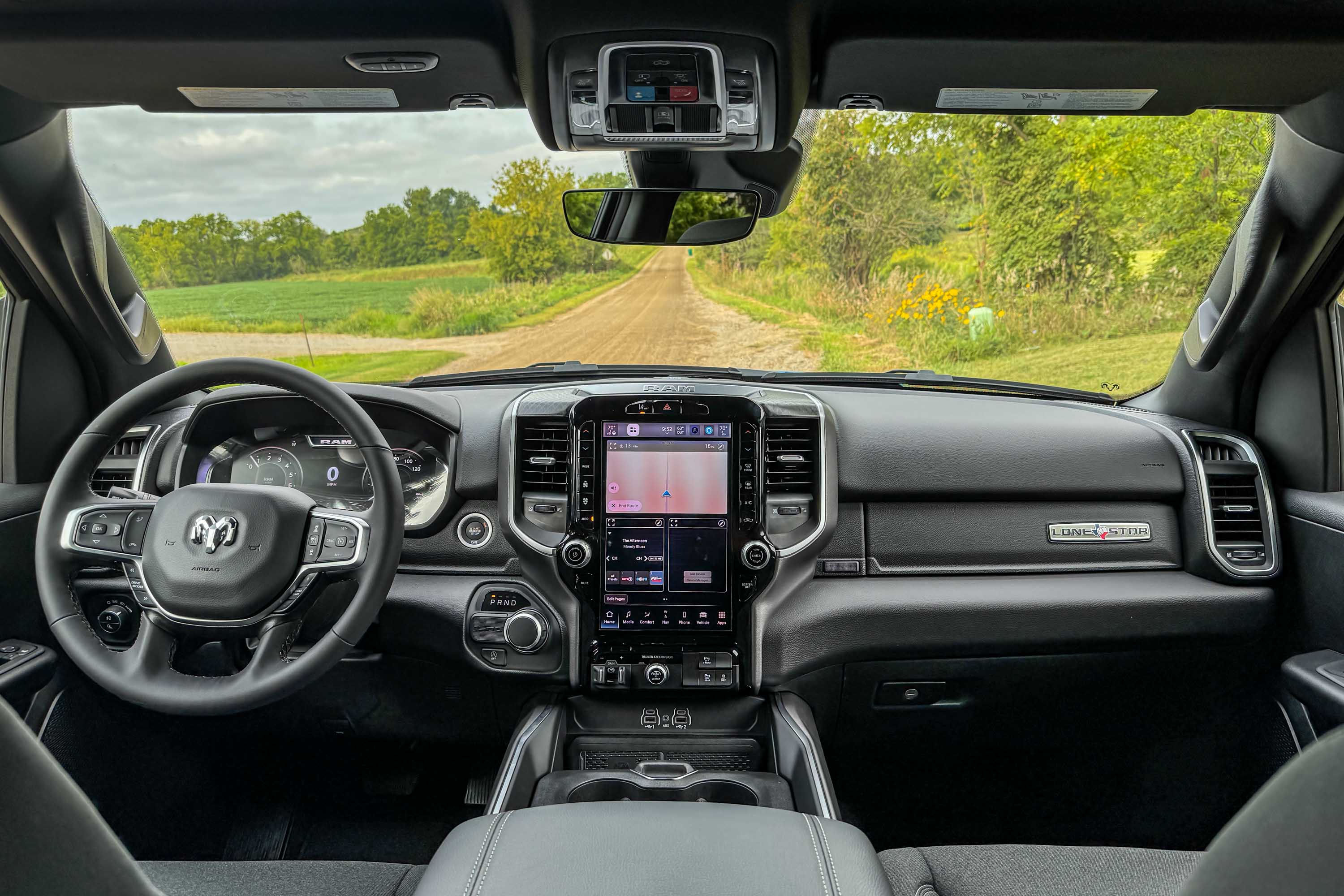
Capable Chassis
In the autocross course, the Ram felt completely competent. It responded appropriately and reasonably quickly to my inputs and dutifully understeered it as I entered the corner a bit too, let’s say, spirited. Tuned to deliver a comfortable ride, the 1500 handles better than expected. I quite enjoyed it, to be honest. But wouldn’t want to pay the tire bill on my own truck after a nice tire-squealing joy ride.
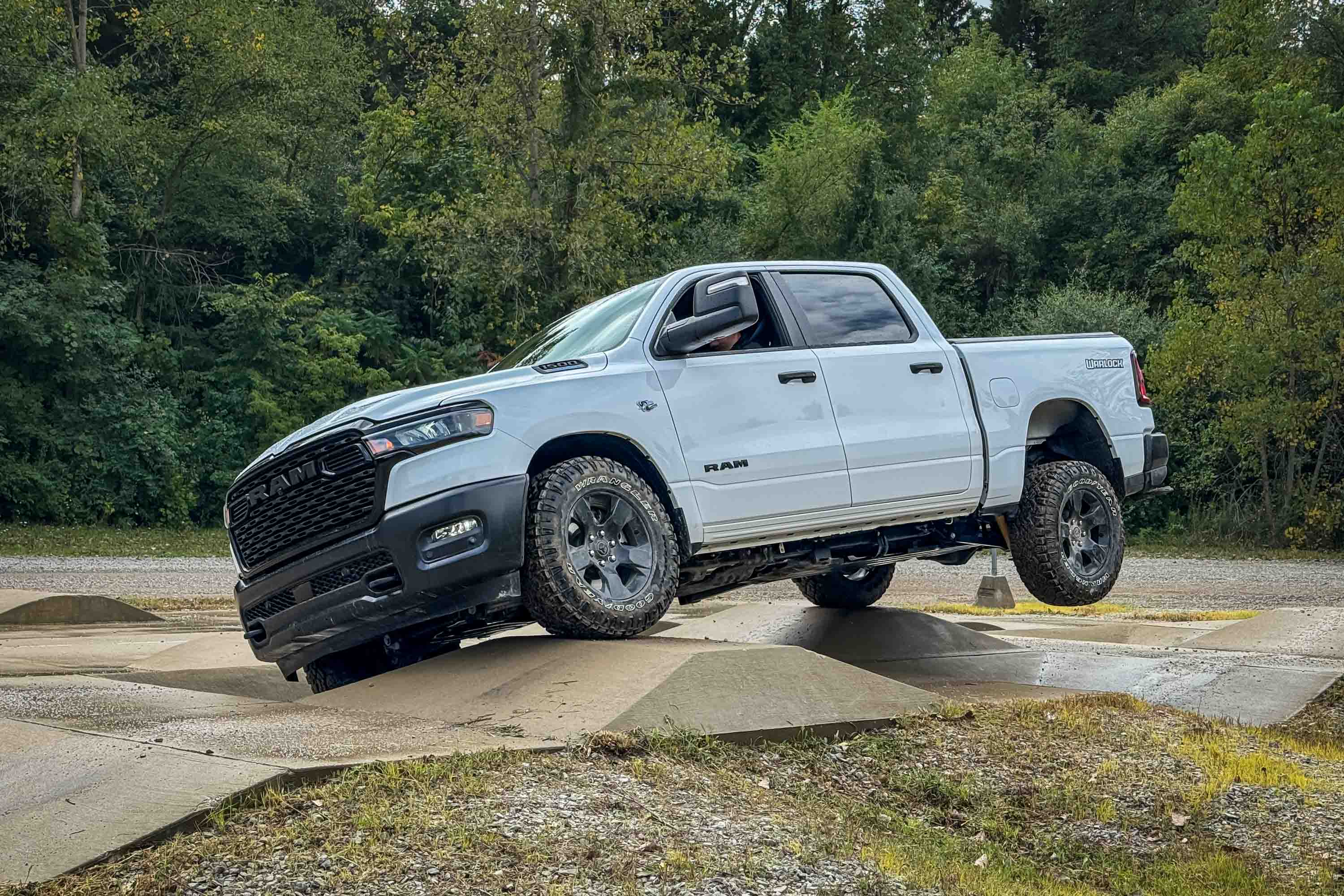
Throw a couple of all-terrain tires on, like the Warlock, and all of a sudden, the Ram manages off-road duties stress-free. I put the transfer case in four-low and climbed up literal stairs, walked over logs, and splashed through a deep, muddy puddle. That came between ascending and descending 20-30–degree slopes. The advantage of getting access to a manufacturer’s proving grounds — all of the above scenarios were within 10 minutes of each other.
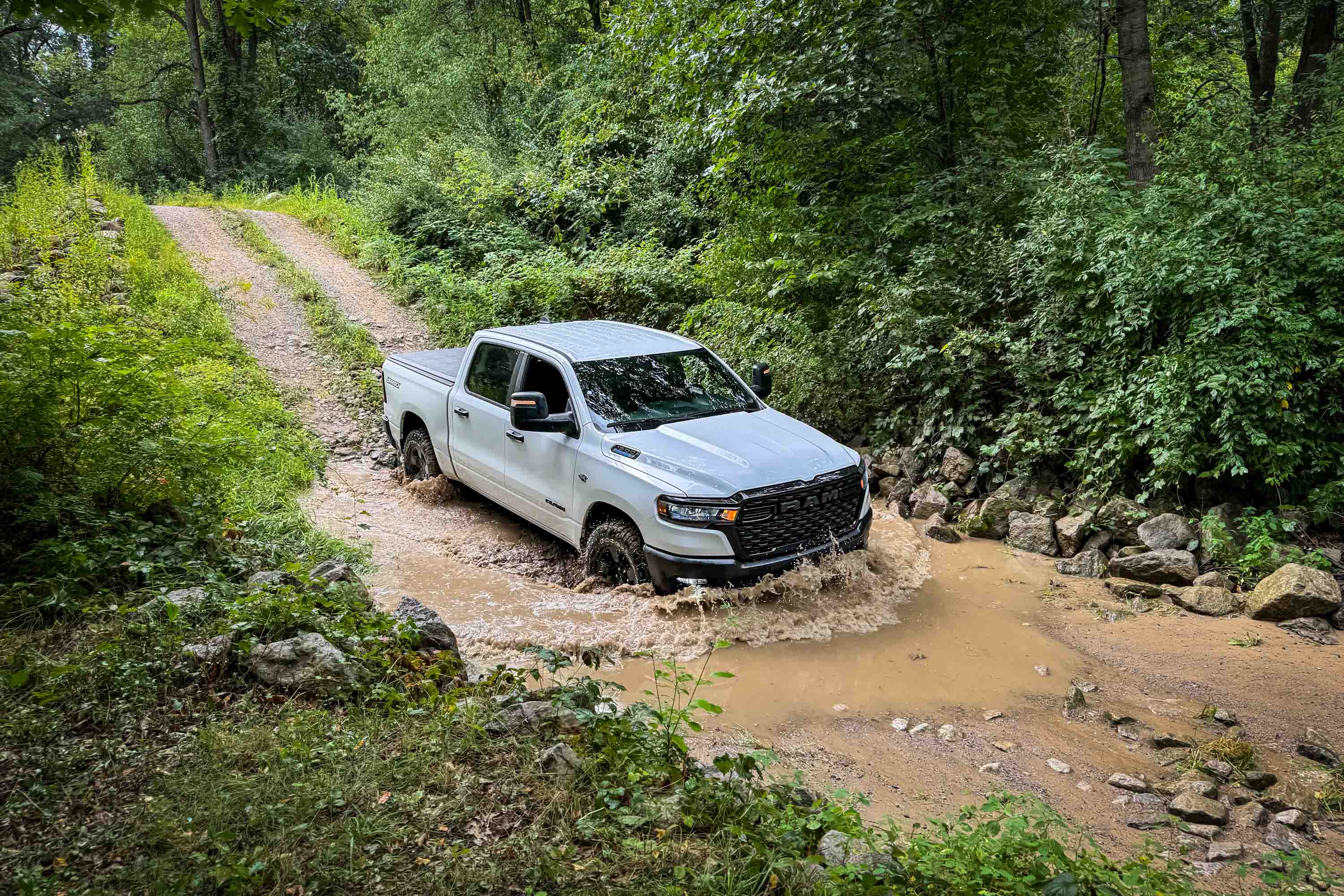
What Else Is New for 2026?
Aside from HEMI, Ram added a new trim and package to the 1500 lineup. Coming in just above the entry-level Tradesman, and replacing the 1500 Classic, the 1500 Express slots in with a starting price of $45,345 (including a $2,195 destination charge). Add the HEMI and it costs $48,240.
Ram equips the Express with 20-inch wheels, black bezel LED headlights, and a few interior accents. Think of it as a Tradesman work truck with a bit of style.
Or take the same theme one step further with the Black Express package. Ordering it adds a sport hood, black badging, black 20-inch wheels, side steps, LED fog lights, and even more interior accents. It costs $995 for the added flare.
Finally, the Ram added two MagnaFlow optional exhaust systems for the RHO. Called a “direct connection affiliated accessories” program. Ram and MagnaFlow co-developed the systems. You choose between the MagnaFlow SPEQ Series cat-back exhaust system for $2,089 or the xMOD Series cat-back system for $3,099.

2026 Ram 1500 Review: Summary
The 2025 Ram 1500 update sent shock waves through the truck market. Frankly, customers hated that they lost the option of eight-cylinder power. And now that it returns, how will customers react to having to spend close to an extra three grand to get it?
Even the base work truck Tradesman requires $46,115 to run a HEMI. And the least expensive Big Horn, Ram’s traditional volume truck, requires $51,370 to leave the dealer lot with 5.7 L under the hood.

At the same time, Ram did add real value with the nicer exhaust and the larger gas tank. Both increase the things that make V-8s great: beautiful noises and longer stints on the road. And now it does so in a truck with modern, center display technology and a well-tuned chassis.
If you fully embrace the emotional side of owning a vehicle, you’ll fully appreciate why the HEMI just fits in the Ram, both literally and figuratively. Rumble, rest, repeat.
Read the full article here





